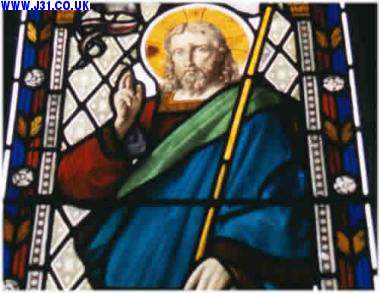Click below to see the medieval, gothic, and parish churches in…
| Anston Aston, Aughton Beighton Dinnington Harthill Kiveton Park and Wales Killamarsh Laughton en le Morthen Shireoaks Thorpe Salvin Throapham Todwick Ulley Roche Abbey (medieval abbey) |  |
As far as I know these are the parish churches. They are certainly the most historically and culturally important buildings in the area with components up to and over 1,000 years old.
They also held the parish registers (records) of births, marriages, and deaths which, is of interest to genealogist or compiling their family tree – Laughton en le Morthen Church’s was started in 1547 and are some of the records oldest in the UK – surnames were only fixed around about 1400AD in any case; before that a person would be named after the town of village they came from, e.g. Wryksop (present day Worksop), or the jobs or positions that they had, hence the many smiths (blacksmiths), coopers (barrel makers), etc. The buildings valuation for insurance purposes circa 1998 is around the £1 to 2 million mark (US$1.5-$3 million) each, although culturally such buildings are more or less irreplacable.
They also incorporate architectural elements including saxon, norman, medieval, and victorian gothic – often ovelaid in the same structure charting its evolution over the last 600 years or more. Many are worth looking at for the stained glass alone (best seen from the inside as intended). Plus I find it fascinating strolling around the ancient graveyards seeing which is the oldest legible headstone or tomb (about 1730 so far).
Many are in need of essential restoration and maintenance, and if you feel that you would like to contribute in some way then visit the Historic Churches Preservation Trust (HCPT), a charity founded in 1953, and the leading body dedicated to preserving Britain’s ancient churches.
They are all Church of England, that is to say Protestant, but were Catholic when built as was all Christendom until the influence of those protesting against absolute Papal rule like Martin Luther in Saxony, North Germany, in the 1520s, began to have an effect. England became Protestant during Henry VIII’s reformation in the 1530s, and so therefore did these churches. Before that England had been Catholic for 1,000 years. Henry hated Luther by the way, and only started the reformation in England because the Pope wouldn’t grant him a divorce (he got around the problem by executing some of his 6 wives) but that’s another story that impacted upon this area with the ransacking of north English abbeys, monasteries and churches as the papal power base was smashed in England and Wales, etc. (see the ruins of Roche Abbey for an example.
There are many more churches on the sites area e.g. Catholic, Methodist and primitive methodist, and Adventist.
The methodist’s story is particularly important as they were in part a reaction to the rigid hierarchy of the established Church, e.g. that had the best pews reserved for (essentially) the richest and most influential, and was a wealthy landowning church very much part of ‘the system’. The methodist chapels had no such rigidities and were far more egalitarian, and from them rose the labour movement and the Labour Party.
See also:Florence Protestant Cemetary article, Italian cemetery of the Rector of All Saints, Aston 1850.
See also:the Story of the Church of All Saints, Aston by Mary Layne 1948.
See also: From Kiveton pit 1926 to the American pulpit – Prof Mellor’s story 1926 – 1994
Note: The above listing is only a small proportion of all the churches in the area. For a fuller listing try the FindaChurch website on www.findachurch.co.uk/area/sk/sk48.html
